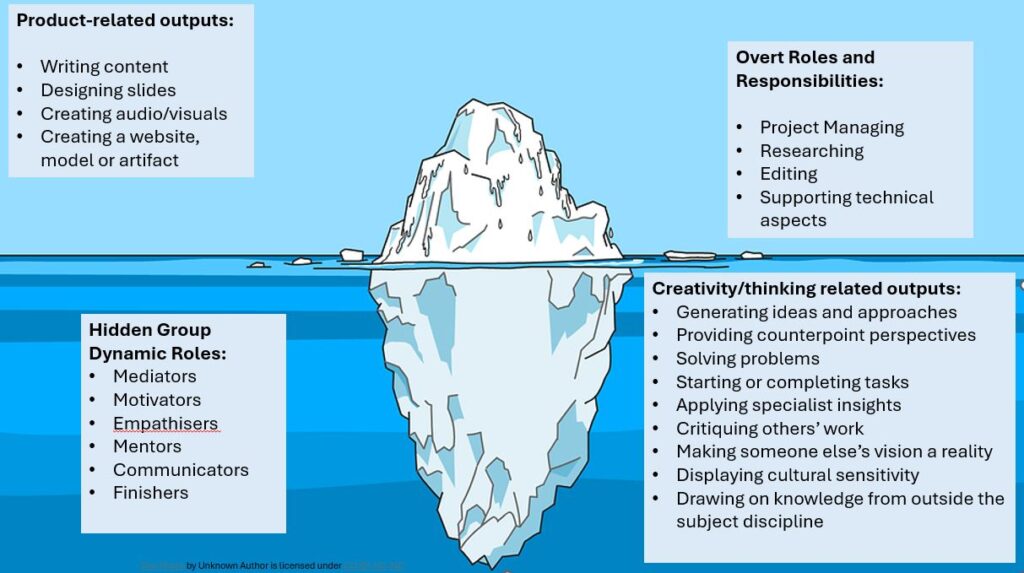Published on: 30/10/2024 · Last updated on: 30/10/2024
A note on unequal versus equal contribution
One of the key challenges to arise with group work, which often results in group tensions, is the perception that not everyone in the group has contributed in equal measure to the aims of the group project or assignment. Whilst contribution is rarely completely equal and consistent across a group, our group assessment processes and the language we often use around group assessment perpetuates this sense of ‘unfairness’, often encouraging our students to consider unequal contribution as something which should be measured, quantified and used in evidence.
A simple shift in getting students to note examples of equal contribution may go some way to help groups create a more positive and supportive environment where we seek out examples of contribution, particularly when this is less obvious.
The challenge of measuring equal contribution
It can be hard to measure and judge what ‘equal’ contribution looks like especially as this can take on many different forms, some more obvious or visible than others. For example, an individual’s contribution could be measured through attendance at meetings, time spent working on something, or by the amount of words written.
But contribution to the group can also be made in ways that are more subtle or less obvious, such as an individual helping the rest of the group to keep the big picture or aims in mind, or a group member who provides empathy and support for others when needed.
Members’ contributions might also vary across the life cycle of the group project, as some group members may be naturally better starters or finishers and people all work at different paces.
We refer to this as our Iceberg of equal contribution. The following tool can be used with your students to help them to develop a more holistic sense of what equal contribution can look like and how some forms of contribution might be more hidden than others.
It can be useful to encourage groups to look beyond the more obvious or explicit forms of contribution, such as producing an output or carrying out a specified role, to consider factors such as creativity, thinking differently or facilitating group dynamics which are equally important to the success of the group.
